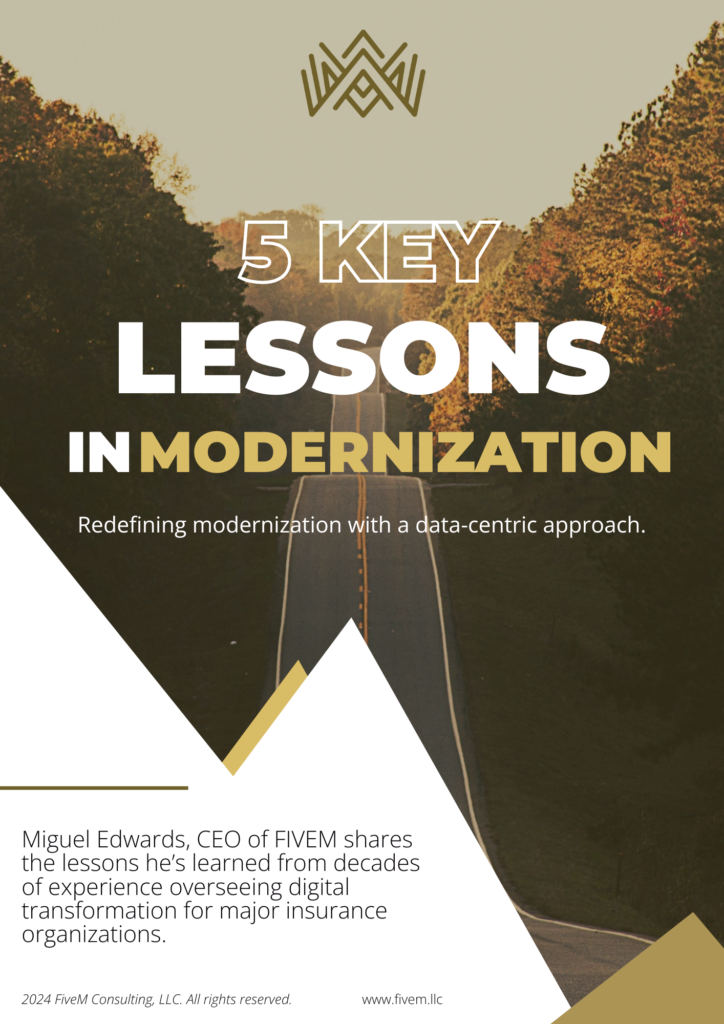As the insurance industry grapples with rapid changes and an aging leadership demographic, a critical priority has emerged: preparing the next generation of leaders to navigate complex challenges and opportunities. Leadership development isn’t a “nice-to-have”; it’s a strategic necessity for organizations looking to thrive in a competitive and ever-changing landscape.
Why Developing Future Leaders in Insurance Can’t Wait
The insurance industry is at a pivotal moment, where challenges and opportunities collide. From shifting customer expectations to a shrinking talent pool, companies must be proactive in cultivating leaders who are ready to guide their teams through these changes. Let’s break down some of the key factors driving the urgency.
1. Complex Operational Landscapes
Legacy systems, intricate regulatory frameworks, and high customer expectations create a challenging operational environment. Leaders must be equipped to simplify complexity and drive innovation.
2. Evolving Customer Demands
Today’s policyholders expect seamless, tech-driven, and personalized interactions. Leaders who understand how to integrate technology with human-centric service will stand out in a crowded market.
3. Shrinking Talent Pool
The insurance field is experiencing a generational shift, with many seasoned leaders retiring and fewer young professionals entering the industry. This talent gap makes identifying and nurturing internal talent more critical than ever.
Without a clear leadership pipeline, organizations risk falling behind competitors who are actively investing in their future leaders.
How to Build a Leadership Pipeline in the Insurance Industry
A strong leadership pipeline requires a deliberate, structured approach. Here are five actionable strategies to develop future-ready leaders:
1. Invest in Continuous Education and Development
Future insurance leaders need more than industry expertise; they need a strategic mindset and strong leadership skills. Companies can foster this growth by:
- Hosting workshops on leadership principles, decision-making, and innovation.
- Offering courses in areas like customer-centric strategies, risk management, and digital transformation.
- Creating leadership coaching programs tailored to the insurance landscape.
Additionally, partnerships with universities or executive education programs can prepare mid-level managers to seamlessly step into senior roles.
2. Promote Mentorship and Knowledge Sharing
The institutional knowledge held by experienced leaders is an invaluable resource. Pairing emerging leaders with seasoned executives in structured mentorship programs offers:
- Firsthand guidance on navigating the unique challenges of insurance.
- Insights into building strong relationships with clients and stakeholders.
- Real-world lessons on team leadership and strategic decision-making.
Mentorship not only accelerates development but also ensures continuity, preserving critical organizational knowledge as leadership transitions occur.
3. Focus on Emotional Intelligence (EQ)
Leadership in insurance isn’t just about managing numbers—it’s about understanding people. Emotional intelligence is key to:
- Building trust with employees, clients, and partners.
- Managing interpersonal dynamics within teams.
- Fostering collaboration and a positive workplace culture.
Workshops, assessments, and ongoing EQ training can help identify and nurture emotionally intelligent leaders who inspire loyalty and drive engagement across their organizations.
4. Prioritize Diversity and Inclusion
Diverse leadership teams aren’t just good for optics—they’re better for business. Diversity drives innovation and helps organizations connect with a broader customer base. To promote inclusivity in leadership:
- Remove bias from leadership selection processes.
- Offer leadership opportunities for underrepresented groups.
- Showcase role models from diverse backgrounds to inspire emerging talent.
A diverse leadership pipeline positions companies to better serve their customers while fostering a more innovative and dynamic organizational culture.
5. Embed a Culture of Agility and Adaptability
The insurance industry is constantly evolving, and future leaders must embrace change as a constant. Embedding agile practices into leadership development can help leaders:
- Respond effectively to emerging challenges, from new regulations to disruptive technologies.
- Foster resilience and adaptability in their teams.
- Encourage innovation through experimentation and cross-functional collaboration.
By cultivating a culture of agility, organizations empower leaders to think on their feet and seize new opportunities.
The Long-Term Benefits of Leadership Development
Investing in a strong leadership pipeline is a long-term strategy that pays off in numerous ways:
- Continuity and Stability: Organizations experience smoother transitions when leaders retire or move on.
- Higher Employee Engagement: Teams are more motivated when they see clear pathways for growth and strong, capable leadership at the helm.
- Enhanced Market Competitiveness: Future-ready leaders ensure companies can quickly adapt to changes, meet market demands, and exceed customer expectations.
Real-World Example: How Leadership Development Drives Results
Consider an insurance company that implemented a leadership program focused on mentorship and continuous education. By investing in mid-level managers, the company saw a 20% increase in internal promotions within three years. Not only did this improve employee retention, but it also enhanced customer satisfaction scores, as clients responded positively to consistent and capable leadership.
This real-world success highlights the tangible benefits of building a leadership pipeline tailored to the insurance industry.
The Path Forward
At FiveM Consulting, we specialize in helping insurance companies navigate the complexities of leadership development. Our tailored programs empower organizations to identify, nurture, and prepare future leaders who can thrive in a rapidly evolving market.
The insurance industry’s future depends on the actions taken today. Let’s work together to ensure your organization has the leadership it needs to succeed.





